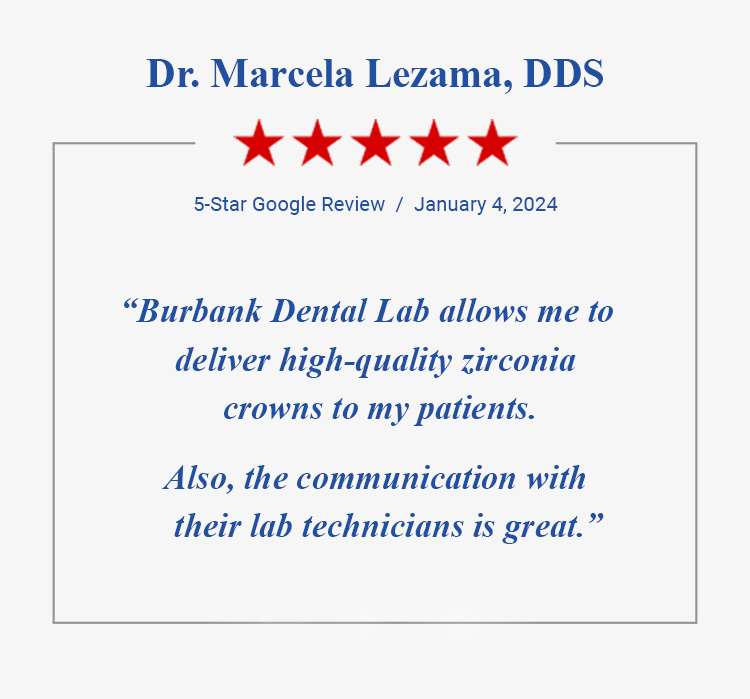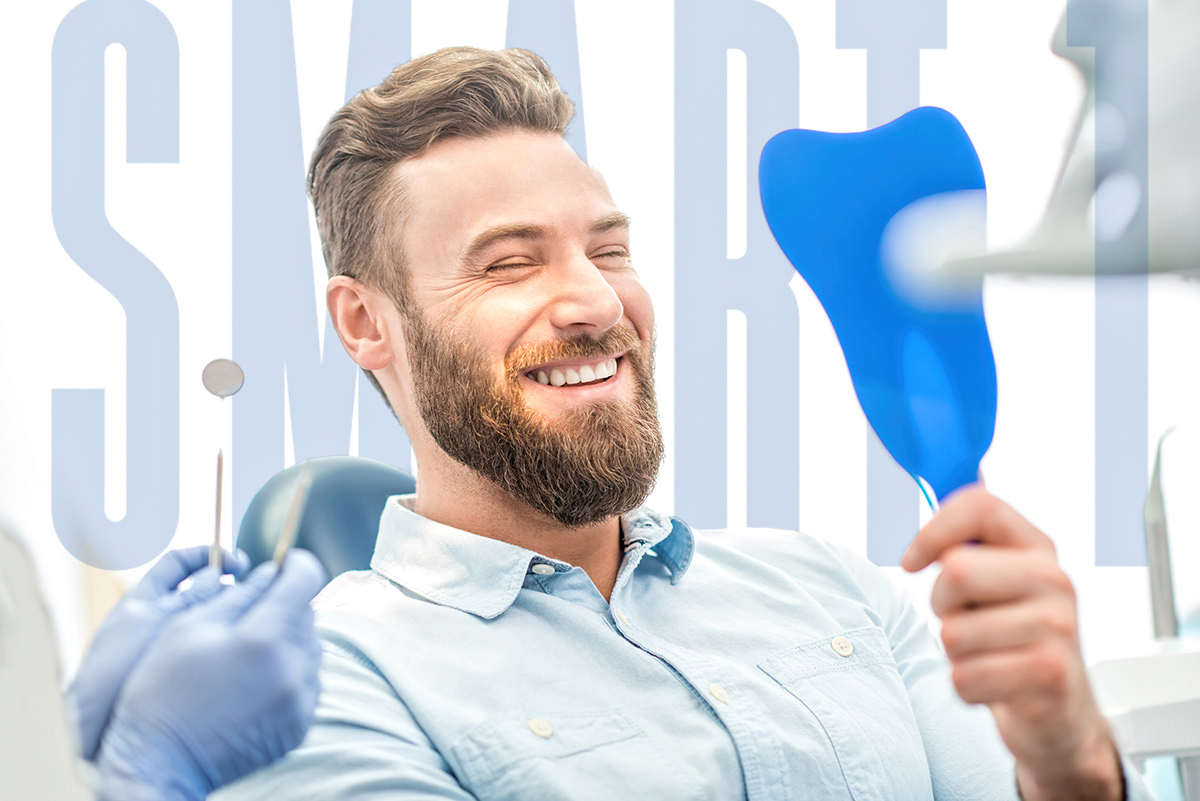In the United States, an estimated 120 million individuals suffer from the absence of at least one tooth. Tooth loss can lead to numerous detrimental health consequences, such as diabetes, cancer, and coronary complications.
As a result, it is crucial to provide edentulous patients with appropriate dental interventions. Treatments for missing teeth encompass dentures, partial dentures, dental implants, and fixed bridges. Each treatment option for edentulism presents its advantages and disadvantages. Removable options are often prescribed to address the financial or physiological concerns of patients. Given the increasing prevalence of edentulism, removable treatment modalities remain essential considerations.
Partial dentures represent a suitable solution for many patients, addressing diverse needs such as improved mastication, facial appearance, tooth alignment, and phonetics. Moreover, partial dentures are a cost-effective alternative for patients who cannot afford other treatments. The two most frequently prescribed partial dentures are cast metal and flexible metal-free variants.
Cast Metal Partial Dentures
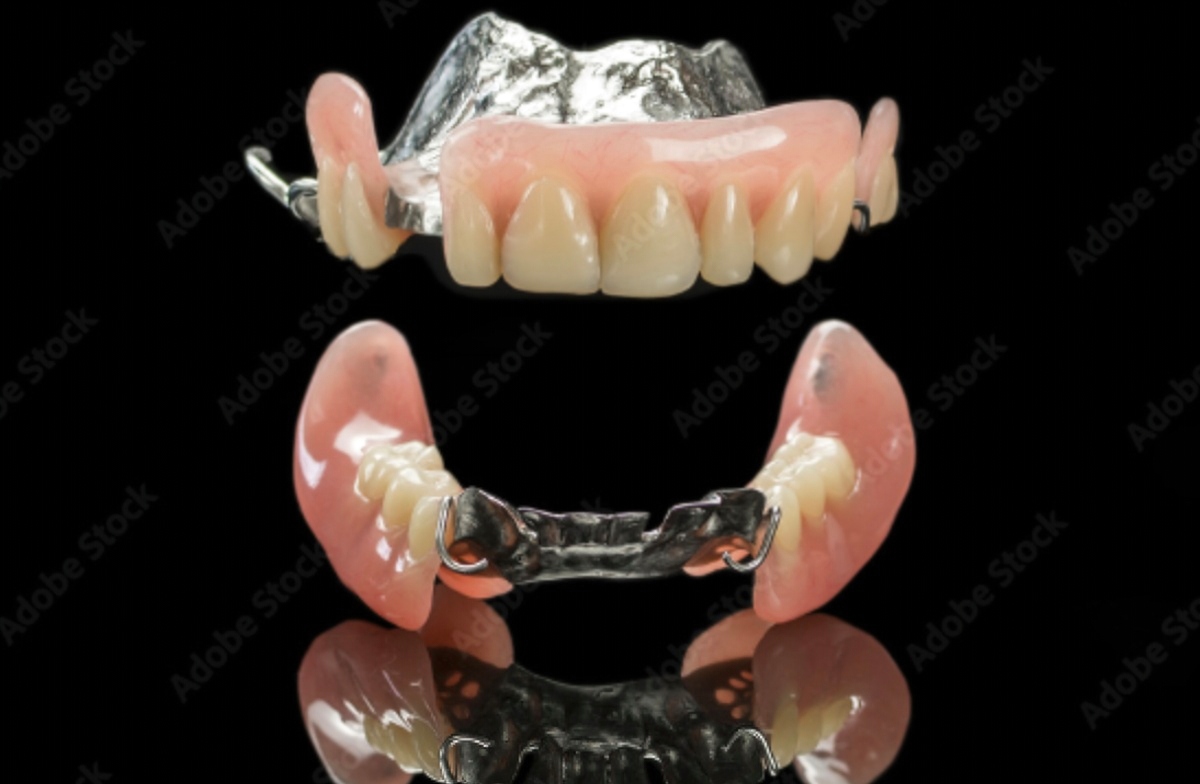
Cast metal partial dentures are among the most commonly prescribed restorations (see above image). Burbank Dental Lab offers Vitallium 2000 and Vitallium 2000 Plus cast metal partial dentures, which provide a durable solution for missing teeth.
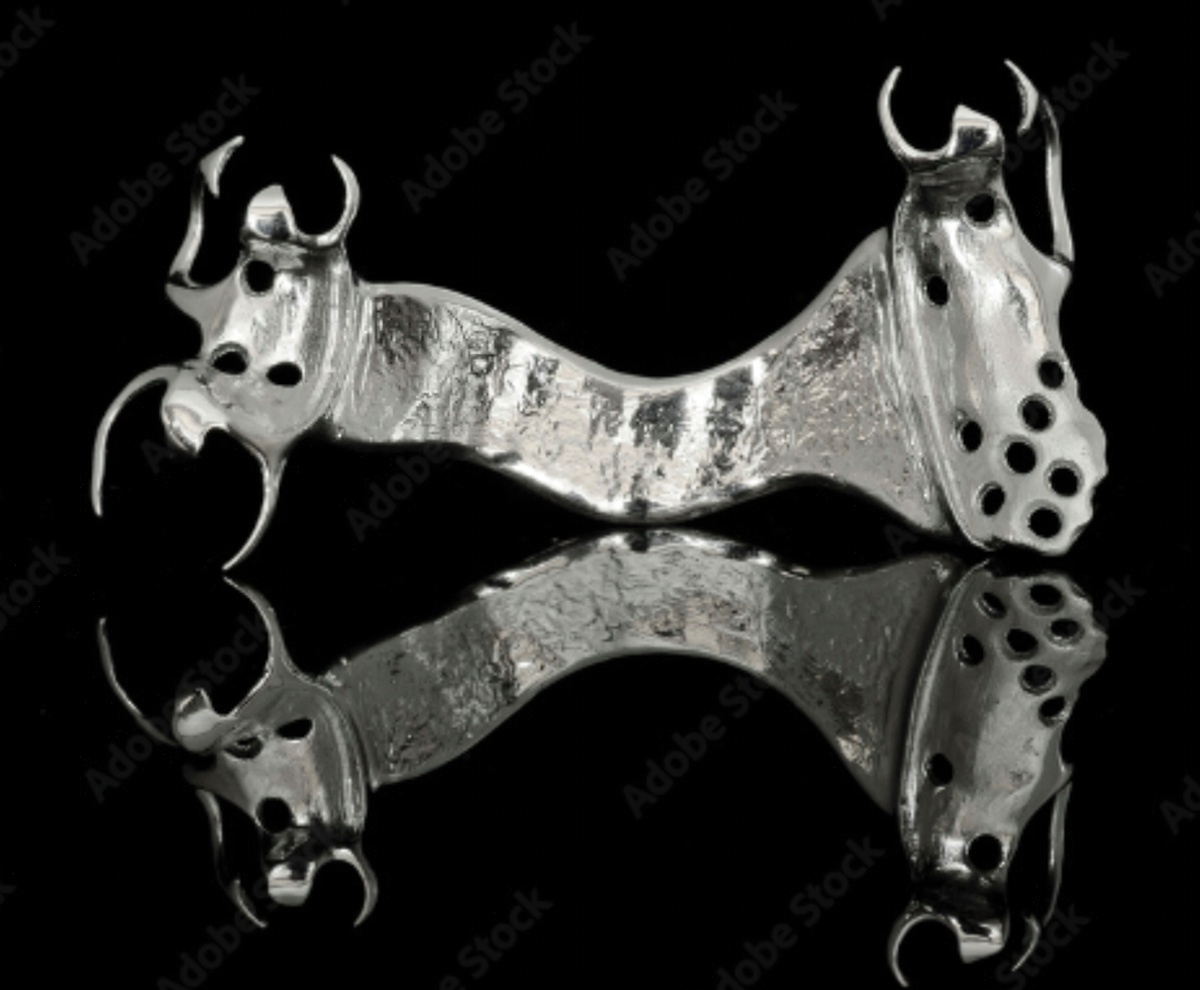
Vitallium 2000 alloys exhibit fracture resistance (see above image) and can be adjusted similarly to gold without deformation, ensuring a precise fit. The material’s high strength allows for a smaller, lighter frame, enhancing comfort and esthetics. Vitallium 2000 partial dentures also provide benefits such as:
These partial dentures are best suited for cases requiring rests or attachments to improve stabilization within the arch. The alloy used is a type of cobalt-chromium, which is biocompatible and offers numerous advantages.
However, one notable drawback is the potential compromise in esthetics due to visible metal clasps. Additionally, these restorations may promote bone loss on abutment teeth, cause adverse tissue reactions, and/or oral galvanism. Proper design and knowledge are essential in creating these restorations.

Flexible Partial Dentures
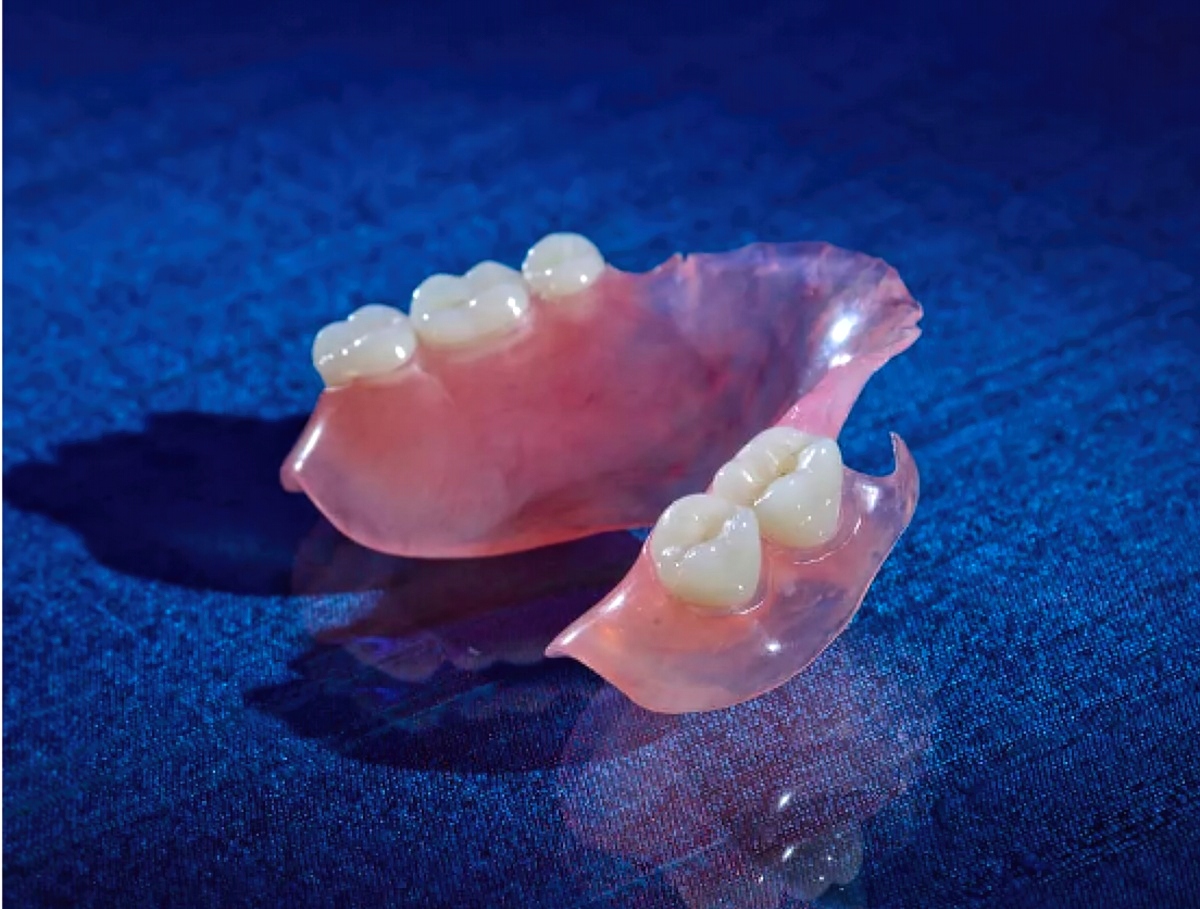
Valplast is another viable option for partial dentures, presenting a metal-free flexible alternative to cast partial dentures (see above image). The Valplast partial is fabricated using thermoplastic biocompatible nylon, which is so resilient that it is backed by a lifetime warranty against breakage of the partial base.
In addition to its remarkable durability, Valplast offers superior esthetics, meeting patients’ high expectations. Available in various tissue colors, Valplast restorations blend seamlessly within the oral cavity without requiring metal clasps.
These appliances serve more than an esthetic purpose, as they are essential for proper mastication and preventing undesirable tooth movements, such as drifting or overeruption. To be effective, the appliance must be worn consistently. Valplast provides one of the most comfortable solutions for patients who require a solution for missing dentition. A comfortable appliance ensures better compliance.
Valplast’s flexibility offers functionality and smooth integration within the mouth. Furthermore, the flexible material allows for equal distribution of masticatory forces, enhancing the partial’s longevity.
The benefits of Valplast include the following:
Valplast Best Practices
Valplast best practices emphasize that the appliance is completely tissue-bearing and does not require any preparation.
To ensure optimal results, it is recommended to use an alginate impression and perform a wax try-in.
Prior to insertion, the appliance should be heated to body temperature by submerging it in hot tap water for 60 seconds. Adjustments, particularly for the clasps, must be executed with caution since they are crucial for retention.
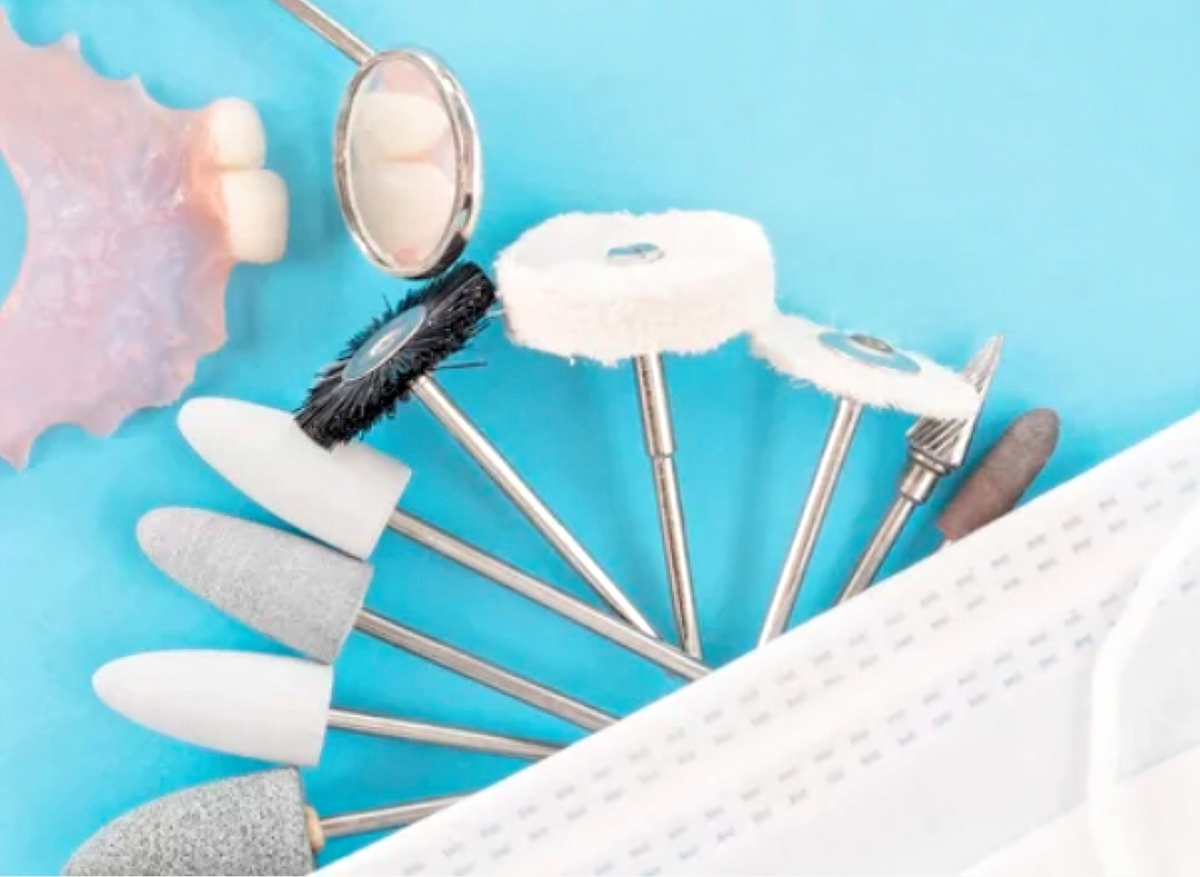
For tightening a clasp, immerse it in hot tap water and bend it outward. For loosening a clasp, bend it inward. To achieve a proper polish, utilize a bullet-shaped, straight handpiece silicone polisher specifically designed for acrylic with a medium grit. If adding teeth to the Valplast appliance becomes necessary, take an alginate impression with the appliance in place, seat the partial in the impression, and pour it immediately.
Send the impression to Burbank Dental Lab for any required modifications.
Additionally, if the partial needs to be rebased, take a rubber base impression. Ensure proper occlusion by having the patient close their mouth as the material sets. Next, take an alginate impression and pour it immediately, keeping the model attached to the denture.
Valplast partial dentures offer an excellent option for patients seeking a more esthetic solution for replacing missing teeth. Flexible partials provide maximum comfort, durability, and an affordable solution for tooth loss. With over 60 years of clinical practice, Valplast is an outstanding treatment option.
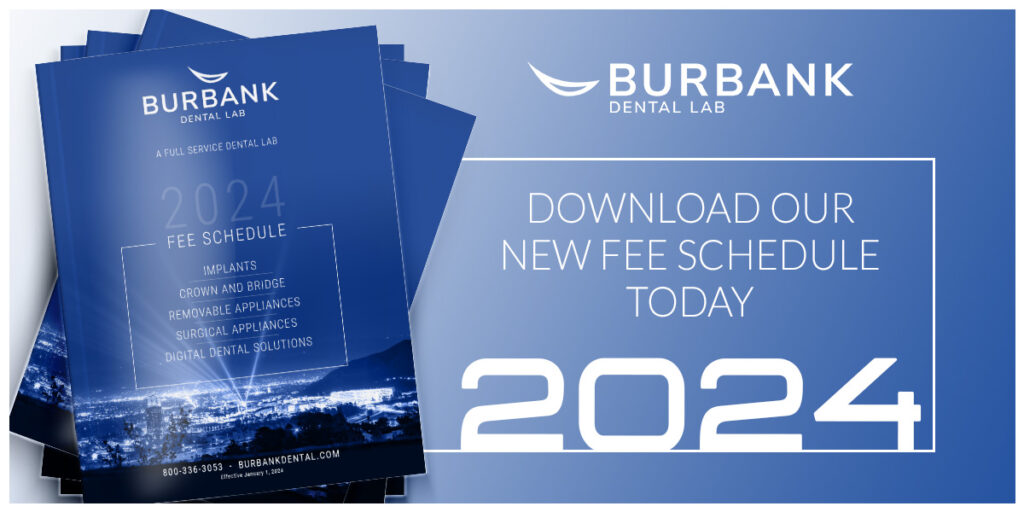
Thermoplastic Comfort System (TCS) Flexible Partial Denture
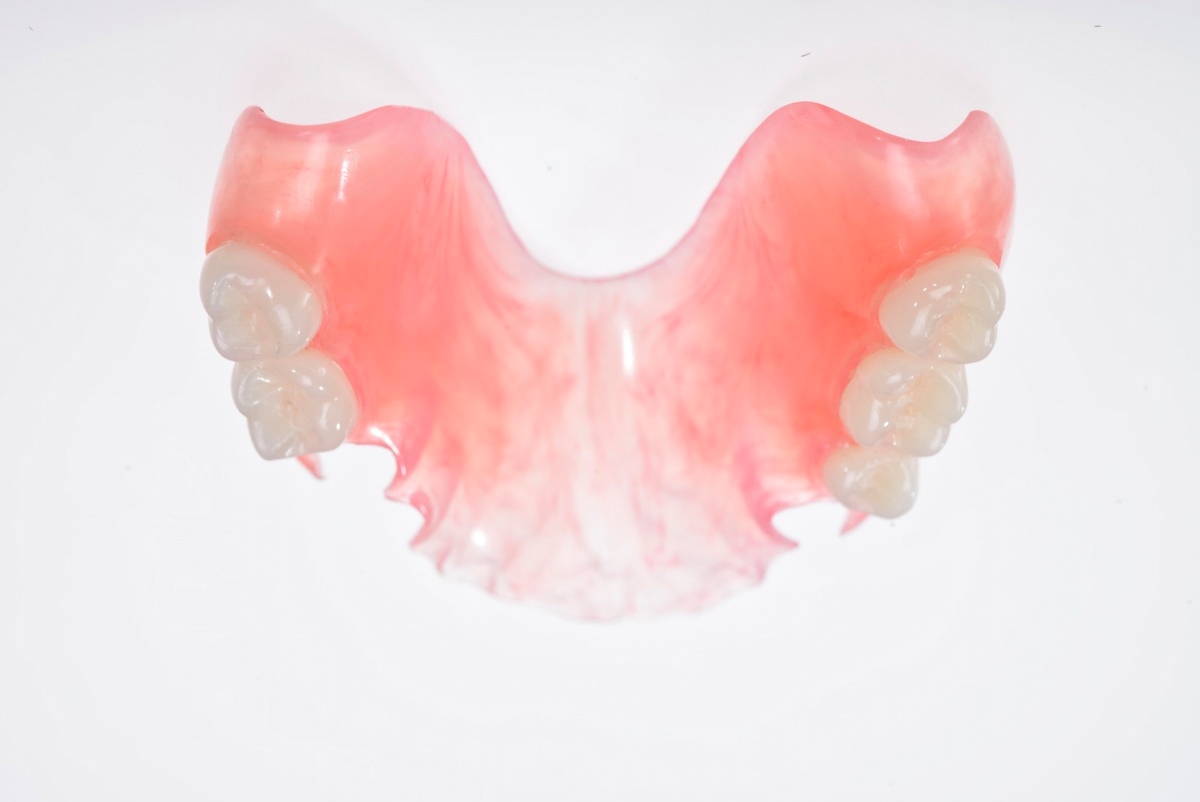
TCS (Thermoplastic Comfort System) is an innovative, flexible material increasingly used in the fabrication of partial dentures. This material provides a resilient, lightweight, and aesthetically pleasing alternative to traditional metal-based dentures. It’s composed of biocompatible nylon or polyurethane resins, which offer several advantages over traditional materials.
One of the major benefits of TCS material is its flexibility, which allows the denture to adapt to the constant movements and changes in the oral cavity. This flexibility results in increased comfort for the patient, as the denture can flex under chewing forces rather than transferring the force to the gums or remaining teeth.
TCS is also virtually unbreakable, providing excellent durability. Moreover, the material is translucent, which allows the natural gum color to show through, providing an extremely natural appearance. It’s also hypoallergenic, making it a great option for patients with sensitivity to conventional acrylic denture materials. With its blend of comfort, durability, and aesthetics, TCS material has become a popular choice for partial dentures.
In addition, these partial dentures offer the following benefits:
The benefits of Valplast include the following:
TCS Best Practices
When it comes to working with TCS materials, dental professionals need to consider a range of best practices. First and foremost, a proper fit is crucial for the comfort and functionality of TCS dentures. Therefore, regular follow-ups with patients should be scheduled to make necessary adjustments. Accurate impressions play an integral role in the fabrication of TCS dentures; a poor-quality impression can result in a poorly fitted denture. In addition, it is important to consider the following:
By following these best practices, dentists can ensure the highest degree of success when utilizing TCS material for partial dentures.
The Key to Success
The key to the success of either a cast partial denture, such as Vitallium 2000 or a Valplast flexible partial denture lies in the proper planning and designing of the appliance. Utilizing Burbank Dental Lab’s Removable team and implementing effective planning and communication helps to ensure patient satisfaction.
Contact a Burbank Dental Lab team member today to start planning your next case.
